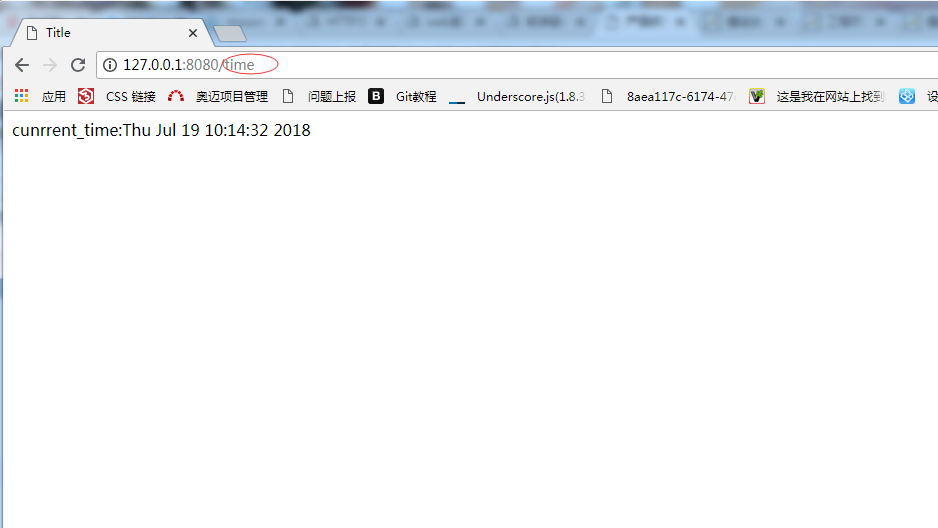建立server服务端:
from wsgiref.simple_server import make_server import time def f1(request): return [b'<h1>hello,Abook!</h1>'] def f2(request): return [b'<h1>hello,Aweb!</h1>'] def cunrrent_time(request): cur_time = time.ctime(time.time()) f=open('cunrrent_time.html','rb') data=f.read() data=str(data,'utf8').replace("!cur_time!",str(cur_time)) return [data.encode('utf8')] #return [data] def routers(): #封装一个元组可以根据点击的URL路径比配到相对应的函数 urlpatterns=( ('/book',f1), ('/web',f2), ('/time', cunrrent_time), ) return urlpatterns def applicattion(environ,start_response): #通过environ封装程一个所有请求信息的对象 #start_response可以很方便的设置响应头 #print("envire",environ) #print("environ",environ['PATH_INFO']) start_response('200 OK',[('Content-Types','textl/html'),('contex','text')]) path=environ['PATH_INFO'];#请求返回的路径 urlpatterns = routers() func = None for item in urlpatterns: #遍历循环找出和请求路径一样的地址 if item[0] == path: func = item[1] break if func: return func(environ) else: return ['<h1>404!</h1>'.encode('utf8')] #封装soket对象以及准备过程(socket,bind,listen) http=make_server('',8080,applicattion) print('Serving HTTP on port 8000....') http.serve_forever()
cunrrent_time文件
<!DOCTYPE html> <html lang="en"> <head> <meta charset="UTF-8"> <title>Title</title> </head> <body> <h11>cunrrent_time:!cur_time!</h11> </body> </html>
浏览器请求:
